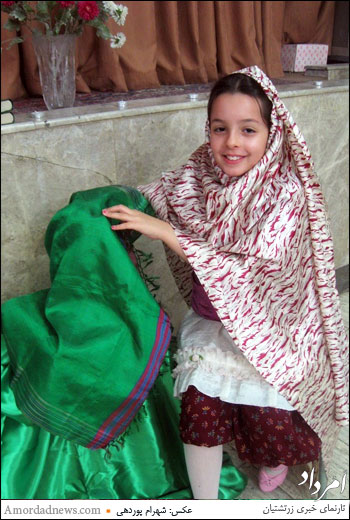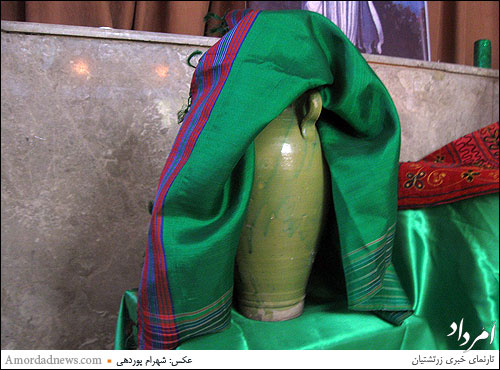Tirgan
ÚDÊpìN Ý¡V
ÚCrëpFA Ý¡V
æD×pìN Ùçk -pìN æD× qC qÞo pìN
ÚCoDF æoDOv = íÛCoßÛoDìwF æoDOv, TeshtarpO¡N = pìN
: PvC æl×A ÚCoDF æoDOv À¤Þ ok P¡ë pìN ok
ÝëC æoDF pÊk íÆ .lÜOwç pO¡N oClëk ÁDO¡× Ökp× Þ ÉorF Þ kph ÚDëDJoDèZ ..
éF EA êDç éØ¡Z æoDF pÊk íÆ ?kpÆ lçCßh ´ßϬ ÚD¡hok Þ æßÇz DF æoDOv
..?lz lçCßh êoDV íGvC éÛDz êpGOv
: íiëoDN p²Û qC
qÞpìJ pèZßÜ× pF EDìvp¾C éÆ í×DËÜç êkCl¡ìJ pèZßÜ× íçDzkDJ ÚD×q ok-1
oCp ,ælz yqDv éF p¨Dd Ýì¾p¬ , kßØÛ æp¤De× ÚDOvpG¬ ok Co ÞC Þ lz
Pw¡Û Ýì×q pF pìN DV pç Þ lëDØÛ EDNpJ êpìN í¥iz lÛÞD×k éÏ qC lÜOzCnÊ
éF êpìN pìËÛDØÆ yoA , D× êC æoßOvC ÚD×pè éÆ .lzDF ÚCoßN Þ ÚCpëC ldpv
EDO¾A ´ßϬ q CpìN ÚA íOëCÞo éF Þ kpÆ Dço CpÛA ÞqDF Mß DF Þ éOzCnÊ ÚDØÆ éÏZ
DWÛAÞ l×A kÞp¾ ÚßeìV kÞo oDÜÆ ok lÜ×ßÜNíOhok pF Þ kßF PÆpd ok qÞpØìÛ DN
.PzCnÊ oDÇÜëC pv pF Co kßh ÚDV yoA .lÛkCk oCp qp× Co
ÚCoDF qÞo ÝëC ok í®eÂ Þ íÎDwÇ¡h ÍDv P¿ç qC l·F , íÛDvDv qÞpì¾ ÚD×q ok-2
.lz oßè¡× ÚCrëpFA Ý¡V ÖDÜF Þ lÛlìzDJ EA ÙèF íÎDezßh qC Ökp× ,lëoDF
kDF Þ pìN
(ÚDØvA ÚlëoDF qDºA ok ÚDØÆ ÝìËÛo éF «ßFp× ) ÌÛo P¿ç qC Ù¡ëpFC íñDèiÛ
lÜÜÇì× qDF CpÛA "kDF" qÞo ok Þ kß¡ì× éOwF Pvk b× éF "pìN" qÞo ok éÆ kß¡ì× éO¾DF
.l¡ì× éOzCk í×CpÊ ÚA kDë Þ Ý¡V ÝëC qÞo 11 HìNpOÜëlF (lÛoDKwì× kDF Pvk éF)
  |
: Ý¡V ÝëC éF «ßFp× êDçDOvÞC
éÆ "ælì×ærë ÙOÜèËÜÛ æph ÙOÛßëo ÖoDOv ÙëpO¡N" éÏØV ) ¢ëDìÛ lìzoßh -
qC ¢ìF lzDGì× "ÙìñDOwì× Co lÜØçÞph Þ lÜ×ßëCo pO¡N æoDOv" íÜ·× éF
(kß¡ì× oCpÇN oDFl¥Çë
¢ëDìÛpè× -
(éÎÞk) æoÞk Þ ÈZ
;éÆ PvC HëpOÜëlF Þ PvC æqßÆ ÍD¾ ÚDØç ÝëC
CpÛA ÚDØvA éÇëoß®F ¼ÎDFDÛ ÚDÊrìzÞk ¯vßN éØ¡Z P¿ç qC EA , ÐG qÞo ok-
kß¡ì× ælÛDzßJ êrGv ÍDØOvk DF Þ ælz ¸ØV kD¡Ê ÚDçk DF êC æqßÆ ok lÜìGÛ
lÜzDF éOzCk íOìÛ Þ lÜÏëD× éÇìÛDwÆ DN lÛpGì× éÏe× ÍqDÜ× éF Co æqßÆ ÚA-
lÛqClÜìF æqßÆ ok Co ÈZßÆ óìz kßh éÛD¡Û éF
DOvÞC ÚlÛCßh Ýب Þ lÜçlì× oCp êÞpv Phok pëq ok Co æqßÆ qÞpÛDØç ÚDëDJ ok-
kß¡ì× kÞk lÜKvC Þ ¢NA
 |
 |
CpÛA PvC ækpF Þpv Phok pëq éF Co æqßÆ éÇëC ærìzÞk , ÚDÊpìN Ý¡V qÞo fG¤ ok -
kßz ÖDWÛC éÎÞk Þ ÈZ ÙvCp× DN koÞBì× lÜOwç ¸ØV íËØç éÆ éÏe× ÚDì× éF
ÖDËÜç ÝëC ok éÆ lÜëCpwì× Co íñDç íOìF Þk lÜÏF êCl¤ DF Pì·ØV ÝìF qC íNCp¿Û -
p·z , óìz ÚA HdD¤ Þ koÞA í× ÚÞpìF Co ÐhCk êDçrìZ qC íÇë ÙÛDh ærìzÞk ÚA
ÖDØN ok .lzDGì× pìh Þ PGS× CpSÆC éÆ lÜÇì× pìw¿N kßh PìÛ éF Co ælz ælÛCßh
lÛDØF ælìzßJ rGv ÍDØOvk ÚDØç DF æqßÆ ok kß¡ì× í·v ÐdCp×
ÚDèÊDÛ éF ærìzÞk ÚA , é¬ßFp× óìz ÚkoÞA ÚÞpìF Þp·z ÝëphA ÚlÛCßh qC l·F -
kß¡ì× êrëo EA ÙvCp× qDºA ÝëC Þ krëpì× p¨Dd kCp¾C êÞo éF Co æqßÆ ÐhCk EA
ÙvCp× ÝëC éÆ lÜçlì× é×CkC Co ÚCpËëk êÞo éF ízDJ EA kßh êDè¾p± DF ÝëpëDv Þ
.kpìËì× pF ok Co Ðe× éØç
:kCk ÖDWÛC qÞo ÝëC ok ÚCßOì× éÆ íñDèì×pÊpv Þ MDÃFDw× qC
lzDGì× íFA êDèëqDF Þ ÚDØÆ Þ pìN DF êqClÛCpìN MDÃFDw×
íñCpwÆ yÞDìv qC pìËÛDØÆ yoA p·z
The
story of Tirgan (Teergone)
The festival of Tirgan is observed on July 1st, and it is primarily a
rain festival and it is one of the three most widely celebrated feasts
(along with Mehregan and Norooz) amongst Iranian peoples. Tir in
modern Persian,; Tishtar in Middle Persian or Pahlavi; and Avestan
Tishtrya, is the Yazad presiding over the Star Sirius, brightest star
in the sky, and of rain, and thus Tir Yazad especially invoked to
enhance harvest and counter drought (Av. Apousha).
Besides an Afrainagbn or Jashn dedicated to T ir, there appear to have
been many customs associated with Tiragbn. Mary Boyce (Persian
Stronghold of Zoroatrianism) mentions a game of Moradula ('bead-pot')
or chokbdula ('fate-pot'). She also related the custom of tying
rainbow-colored bands on their wrists which were worn for ten days and
then thrown into a stream. She observed during her time in Sharif-Bbbd
that many of the charming old Tiragan customs had died away by the
1960's leaving "merry-making by young people and children, who with a
happy license... splash and duck one another in the village streams."
Tiragan is also associated with the legend of the arrow ('tir'), which
is briefly alluded to in the Tishtar Yasht (Yt8.6):
"We honor the bright, khwarrah-endowed star Tishtrya who flies as
swiftly to the Vouru-kasha sea as the supernatural arrow which the
archer Erexsha, the best archer of the Iranians, shot from Mount
Airyo-xshutha to Mount Xwanwant. (7) For Ahura Mazda gave him
assistance; so did the waters ..."
An expanded account is found in Mirkond, History of the Early Kings of
Persia, Erekhsha Khshviwi-ishush (Pahlavi Arash-i Shiwbtir, i.e.
'Arash of the swift arrow, and in modern Persian, known as Arash-e
Kambngir) was the best archer in the Iranian army. When Manouchehr and
Afrasiyab determined to make peace and to fix the boundary between
Iran and Turan, 'it was stipulated that Arash should ascend Mount
Dambvand, and from thence discharge an arrow towards the east; and
that the place in which the arrow fell should form the boundary
between the two kingdoms. Arash thereupon ascended the mountain, and
discharged towards the east an arrow, the flight of which continued
from the dawn of day until noon, when it fell on the banks of the
Jeyhun (the Oxus).'
The following Tirgan story from the Persian Rivbybts tie together many
of these elements:
It is related that when t he wicked Afrasiyab, the Tur, ruled over
the country of Iran, it did not rain, at that time, for 8 years.
Afrasiyab, the Tur, asked the wise and the astrologers why it was
not raining. Zu Tahmasp answered: "You turned faithless, because
Faridoun had allotted to you Turkestan (only) and entrusted it to
you whereas he had allotted Iran to us and given it to us. You
turned away from that covenant and set it aside. It is for this
reason that, owing to this sin of yours, it does not rain."
Afrasiyab asked how this could be ascertained. Zu Tahmurasp said: "I
shall throw an arrow from here, and where my arrow falls, there will
be the boundaries (of your territory)." Afrasiyab accepted it and
entered into a compact thus: "I shall consent to have as the
boundaries (of my territory) that place where your arrow settles and
I shall go out of Iran." When this compact was entered into, it was
on the day Tir of the month Tir that Zu Tahmasp uttered the name of
God and threw the arrow from the country of Iran and that arrow fell
in the country of Turan by the command of Lord Ohrmazd. When that
arrow settled in the country of Turan, Afrasiyab took this witness
that the rains did not come on account of his faithlessness. Then
Afrasiyab arose from that place and went out of Iran with his army
and settled in the country of Turan. The intelligence of this spread
on the day Govad and heavy rains poured down on the day Govad. Then
they assented to institute a festival in the country of Iran on the
day Tir of the month Tir and up to now the Dasturs of Iran write a
Nirang (formula) and tie it on the hands of the faithful and remove
it from their hands on the day Govad, throw it into the sea on that
day for the reason that the glad tidings of the return of Afrasiyab
to Turan had reached on the day Govad. It is for this reason that
this nirang is untied from the hands and thrown into the sea so that
all calamities may sink into the sea.
Source: www.home.btconnect.com/CAIS/Celebrations/tirgan.htm



